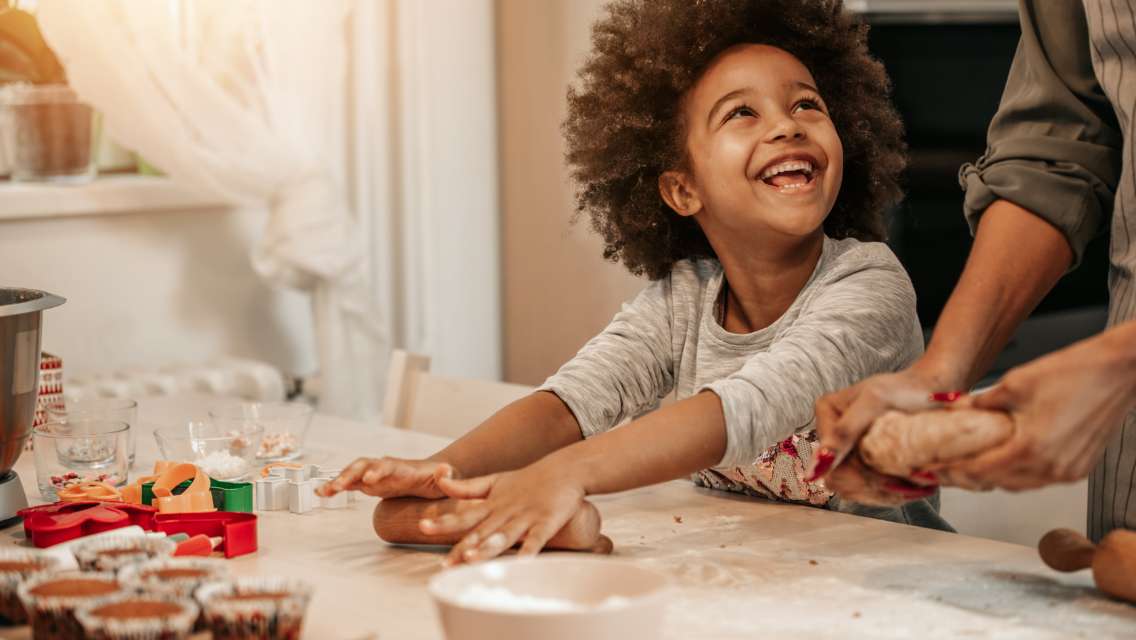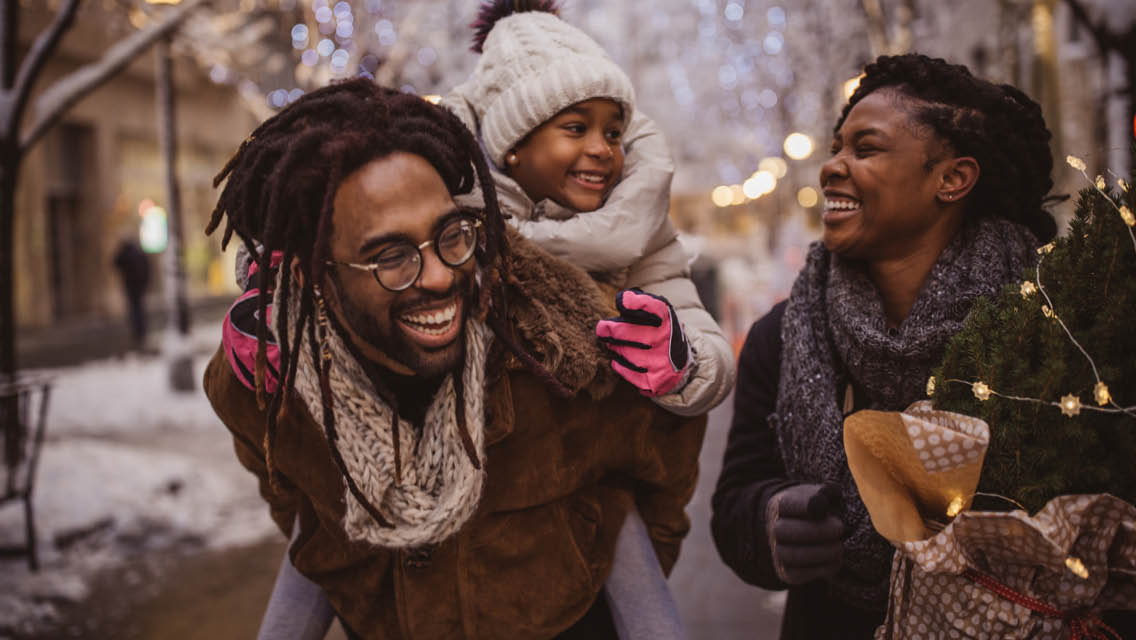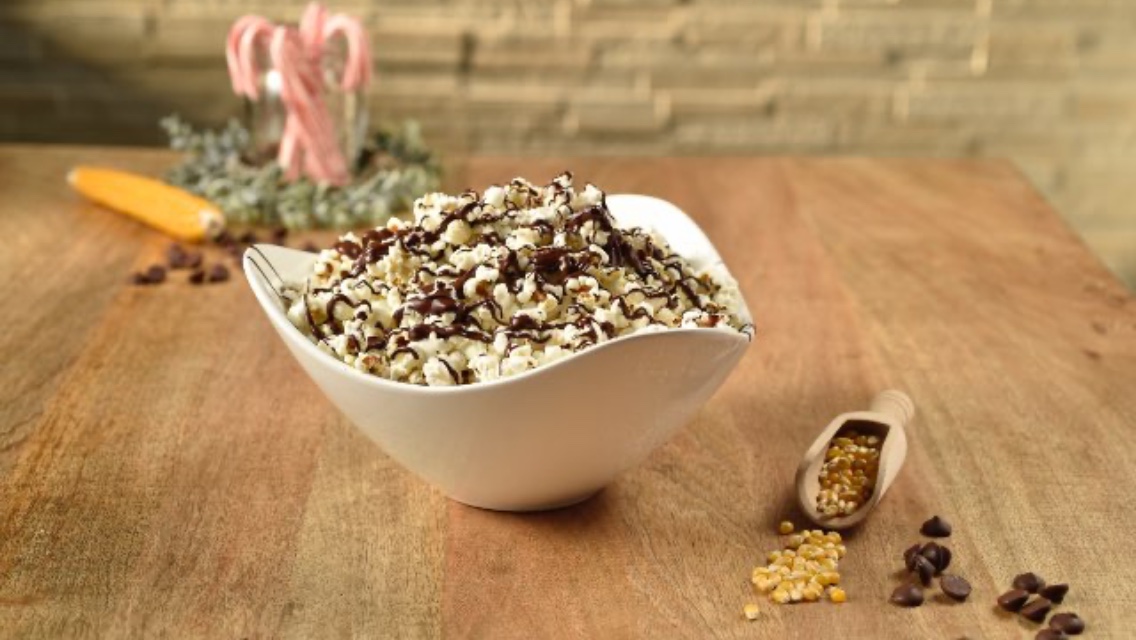This season holds a special place for so many of us: Every holiday on the calendar comes with its own unique celebrations, filled with cultural foods, cherished traditions, and time with loved ones.
We asked a few of our Life Time team members from across the country to share the rituals and celebrations they take part in during the holidays, including those passed down through generations, ones that proudly represent their culture, and others that their families created. There are even a couple of mouth-watering recipes they offered, too.
Blanca Farias
LifeSpa manager at Life Time San Antonio 281 in San Antonio, Texas
There are two holiday traditions I love doing with my kids. The first is making cookies for Santa on December 23. All types of frosting, shapes, and sprinkles are allowed so the kids can let their creative juices flow. They have the best time creating their cookie art and spending time together. We then pick four of the cookies to put out on a plate for Santa to eat on December 24 before going to bed.
The other favorite family tradition takes place on January 6. This is Día de Los Reyes, when we celebrate the coming of the three wise men (los tres reyes magos [or los reyes magos]) in my Mexican culture. It represents the day the three wise men gave their gifts to Jesus Christ and serves as the close to our Christmas celebrations.
It’s tradition for the children to leave their shoes outside of their rooms or under their bed at night, then the three wise men come and leave little gifts or money in their shoes.
Kurt Raedisch
Facility engineer at GreenStreet Life Time in Houston, Texas
My father is from Germany, and as kids, we celebrated St. Nicholas Day on December 5. As tradition goes, St. Nicholas would visit homes on that day and ask if children had been behaving well throughout the year. Children were asked to sing a song or recite a poem, in hopes of receiving a treat.
While St. Nicholas never made an in-person appearance, we would follow the custom of leaving a clean pair of shoes outside the door before going to bed, in hopes that we would receive treats from him overnight. On the morning of December 6, our shoes would be filled with nuts, candy, and small gifts.
Growing up, I also have fond memories of my family’s countdown to Christmas Day. Traditionally in Germany, the excitement and anticipation toward Christmas starts around mid-November. People tend to slow down and gather for baking, singing, and simply spending time together.
My family had an advent calendar for the month of December, and starting December 1, we would open that date on the calendar and have the piece of chocolate that was inside when we got home from school. The chocolate helped serve as a way to hold our attention as the countdown to Christmas continued throughout the month.
Dan Kubo
General manager at Life Time in Austin, Texas
Growing up in Israel, we had pretty standard, yet fun, traditions for Hanukkah that mostly revolved around spending time with family and friends in our household. My siblings and I were brought up secular, but Hanukkah was a holiday where we kept to Jewish customs and traditions.
Every evening during the eight days of Hanukkah, my family and I would light the candles on the menorah while reciting the prayers associated with the act, singing various songs, and discussing the history and significance behind the holiday — pointing out the heroic feats of the Maccabees and the miracle of the oil, which was a small pot of oil that lasted eight days and eight nights.
Hanukkah is the “festival of lights” and in my household, our favorite song was called “Banu Choshech Legaresh,” which translates to “We Came to Banish the Darkness.” The song describes how darkness was driven away by light and fire. Hanukkah is all about the victory of the small versus the mighty. We celebrate the notion of coming together and working toward a common goal — even the small can become mighty.
The most enjoyable part of the holiday for me though was getting to make sufganiyot (Israeli doughnuts) with my mother and siblings. These strawberry-jelly-filled doughnuts are a staple dish for Hanukkah and preparing those along with levivot (or latkes) is the most cherished tradition our family had during Hanukkah. It’s one I cannot wait to continue with my wife and 4-month-old daughter.
Michelle Wong
Senior personal-training leader at Johns Creek Life Time in Johns Creek, Ga.
Growing up Chinese American, it didn’t feel as though we had our feet firmly planted in one culture’s traditions — we weren’t quite 100 percent American and we definitely weren’t 100 percent Chinese. Given that my family started immigrating to the United States in the 1800s, most of the Chinese culture we retained was the way we looked and the way we ate.
Chinese food is multifaceted, and for those whose ancestors come from southern China like mine, there is a lot of steaming, baking, and a little bit of frying. At family gatherings like Thanksgiving, you may find your traditional turkey and cranberry sauce with a side of gai mai fun (sticky rice). At traditional celebrations like Lunar New Year, you’ll find our grandmothers making dumplings, almond cookies, steamed rice cakes, pastries in the shape of bowties, and other delicious treats.
Food for us, like in many cultures, is a celebration of good fortune and family. Some of my favorite memories with my grandmothers revolved around learning how to make steamed rice cakes and pastries. My grandmother would roll out the dough for certain dishes and leave the scraps (which my cousins and I called “little worms”) for us to eat. They were slightly chewy and one of my favorite things.
The following recipe is for the gai mai fun, which is generally used as a side dish for gatherings with around 50 people. Although the ingredient amounts and steps are listed, these recipes are typically prepared by taste and feel, not by following an exact recipe.
Gai Mai Fun
Makes: Approximately 50 servings
Prep Time: 10 minutes
Cook Time: 30 minutes
Ingredients
- 2 cups long grain rice
- 3 cups sweet rice
- 6 Chinese sausages (lop cheung), diced
- 1 tbs. oil (any oil with a high-heat tolerance, e.g., coconut oil)
- 1 stalk of pickled Chinese mustard greens (chung toy), diced
- 10 mushrooms, diced
- 1 large piece of Chinese roast pork (cha siu), diced
- 3/4 lb. cooked baby shrimp
- 8 green onions, chopped
- Oyster sauce to taste
- Chinese parsley for garnish
Directions
- Cook the long grain rice and sweet rice in a rice cooker according to package directions.
- Sauté the sausage in the oil, until it starts to brown slightly, usually only a couple of minutes. Add the mustard greens, mushrooms, and water (just enough to cover the bottom of the pan). Simmer for 15 minutes.
- Add the roast pork, shrimp, and green onions. Cook another 10 to 15 minutes, stirring occasionally.
- Mix one-third of the rice and one-third of the meat mixture at a time with oyster sauce to taste and repeat until everything is well mixed. Garnish with fresh Chinese parsley.
Chris Brunet
Studio manager at Life Time in Oak Brook, Ill.
Christmas started in September in my Filipino household, with small decorations being hung around our home. We decorated with parols (Filipino Christmas lanterns) and twinkle lights. We also attended choir practice as a family to prepare for Christmas caroling. By the time December rolled around, we were in full swing of Christmas cheer — and had our caroling schedule all planned out.
We didn’t have other family members in Chicago when we moved from the Philippines. The other Filipino families in our neighborhood and members of the social group Bicol USA became our extended family.
We gathered two to three times a week during the Christmas season, caroling at each other’s homes and visiting afterward with refreshments. Caroling would start at lunchtime and end in the late hours of the night. Refreshments were full meals with special Filipino party food.
On Christmas Eve, midnight mass began the celebration, and after mass we had the midnight meal, known as Nochebuena, at someone’s home.
Devin Samtani
General manager of Life Time NoHo in New York City, N.Y.
My favorite holiday traditions surround Diwali, a five-day festival of lights and our largest cultural celebration in India. The holiday highlights the power of good over evil, knowledge over ignorance, and light over darkness. Each of the five days holds their own significance with different prayers, customs, and traditions. The date changes yearly based on the Hindu lunar calendar, but typically falls in October or November, with us having celebrated Diwali this year on November 4.
Diwali is a joyous, auspicious, and family-filled time full of food, sweets, and celebrations. It’s also a time of cleansing, purity, and prayer. We love ending Diwali with fireworks on the final day — they symbolize the inner light that protects us from darkness.
Caprice Carter
LifeSpa manager at Life Time in Fort Washington, Pa.
If you asked anyone, they would tell you that the Christmas season is my favorite time of the year. I have so many memories of different traditions that my parents created for my brother and me as kids, but the one that has always been the most special is baking Christmas cookies with my mom.
This has been a tradition for the women in our family for several generations. Whether it was preparing a recipe passed down or something new we wanted to experiment with, we would make hundreds of cookies to give as gifts to family, friends, neighbors, and just about anyone else who would enjoy them.
I can remember the excitement I felt for “baking weekend” and helping my mom with the baking, decorating, and taste testing of each kind of cookie made. I vividly recall the mess of being covered in flour and sprinkles, the smell of the cookies baking in the oven, and the laughter that ensued after “accidentally” breaking a cookie so we could eat it while it was still warm.
When I moved to Pennsylvania as a young adult, I continued this tradition. While it is a bit different than it was when I was a kid, it brings me joy every year. My husband and I are expecting our first child, a little girl, and I look forward to carrying on this tradition with the next generation.
I never met my maternal grandmother, but this recipe, Grandma Jessie’s Rum Balls, was passed down from her. The original recipe calls for water rather than alcohol, so it’s a personal preference, whichever you choose to use.
Grandma Jessie’s Rum Balls
Makes: Three dozen balls
Prep Time: 15 minutes
Cook Time: 20 minutes
Ingredients
- 1 cup butter
- 2 tsp. vanilla extract
- 1/3 cup sugar
- 2 tsp. rum, brandy, or Grand Marnier, or just water
- 2 cups all-purpose flour, sifted
- 1 cup pecans, chopped
- Colored sugar
Directions
- Preheat the oven to 325 degrees F.
- In a mixing bowl, cream together the butter and vanilla, then add the sugar until the mixture is light and fluffy.
- Blend in the liquor or water. Stir in the flour and mix well. Add the pecans.
- Shape into one-inch balls and roll in the colored sugar. Bake the balls one inch apart on an ungreased cookie sheet 20 minutes, or until firm to the touch. Cool before removing from the pan.




